As promised, here are some more images from our time up in the redwoods. I just love this area, with all its damp, primeval moodiness. Claudia and I were there for almost two weeks, and experienced a great variety of weather, including fog, overcast, sun, clouds, and some colorful sunsets. And on the last day of the workshop we went to a beach near Trinidad during a minus tide, where we found some beautiful pools and reflections, and easy access to starfish and other tide-pool creatures.
The variable weather required flexibility. Anyone who’s taken a workshop with me knows that I rarely tell the group very far in advance where we’ll be going. I’d rather wait until the last minute to assess the weather, then go where conditions seem most promising.
This is especially true along the northern California coast, where the fog often behaves in unpredictable ways. One morning, for example, there was no fog to our north, but based on satellite images, and what I could see with my own eyes, it looked like there was fog to our south. So that’s where we headed, and ended up capturing some beautiful foggy redwood scenes in the Lady Bird Johnson Grove.
Shoreline scenes present even more variables. You not only have to consider the weather and light, but also the tides, wave heights, and wind. Some spots are most photogenic at low tide, when you can find reflections in pools or stretches of wet sand. Other places might work better at high tide, when the water surrounds certain rocks or sea stacks. It also helps to adapt your photographic ideas and techniques to the conditions. Big waves crashing against rocks work well with faster shutter speeds, but if the waves are small I’ll often use a slow shutter speed to smooth out the water.
You can’t control the weather or the tides. But if you can be flexible, you can adapt to the conditions you find, and make the most of whatever opportunities nature presents to you. When you’re planning a trip, try to stay where you have the most photographic options – where you can find a variety of nearby subjects that will work in different weather conditions. If possible, don’t make reservations at all. If I’m traveling in the off-season, when hotels or campgrounds aren’t full, I’d rather avoid making reservations, or make them at the last minute, in order to keep my options open. Planning for a trip usually implies creating a detailed day-to-day itinerary. But when coping with the variables of nature photography, try to plan for flexibility.
— Michael Frye
P.S. Before our trip to the redwoods I found some new satellite imagery that proved to be helpful for seeing fog at night. Visible satellite photographs show fog very well during the day, but at night (and early in the morning) you have to rely on infrared satellite images, which usually don’t show fog at all. But searching through the recesses of the NOAA website, I discovered this page of nighttime fog and low cloud images. I found the Fog Image loops to be most helpful (for California, scroll down to the Southwest U.S. section, then to the right of where it says “Fog Image,” click on “Southwest Loop”). In these views the yellow areas show fog or low clouds, and the numbers indicate visibility in miles. Pay attention to the time stamps of the images, as for some reason these loops often combine images from two different days.
Related Posts: Back in the Redwood Country; Back From the Redwoods; Waves and Slow Shutter Speeds
Did you like this article? Click here to subscribe to this blog and get every new post delivered right to your inbox!
Michael Frye is a professional photographer specializing in landscapes and nature. He is the author or principal photographer of The Photographer’s Guide to Yosemite, Yosemite Meditations, Yosemite Meditations for Women, Yosemite Meditations for Adventurers, and Digital Landscape Photography: In the Footsteps of Ansel Adams and the Great Masters. He has also written three eBooks: Light & Land: Landscapes in the Digital Darkroom, Exposure for Outdoor Photography, and Landscapes in Lightroom 5: The Essential Step-by-Step Guide. Michael has written numerous magazine articles on the art and technique of photography, and his images have been published in over thirty countries around the world. Michael has lived either in or near Yosemite National Park since 1983, currently residing just outside the park in Mariposa, California.

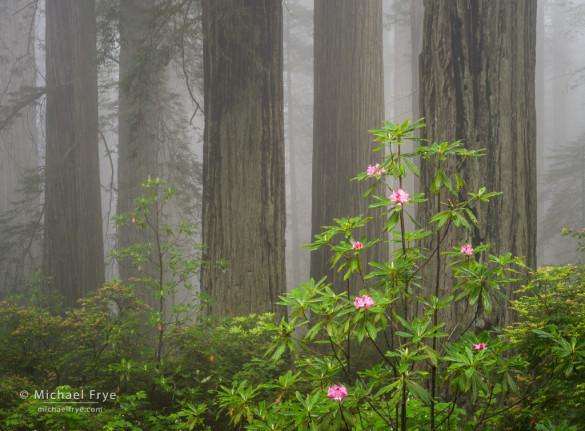
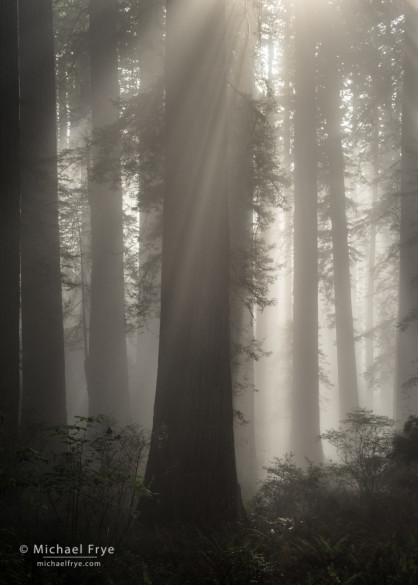
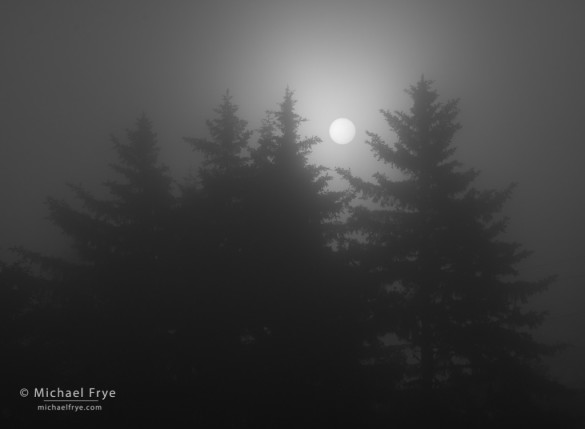
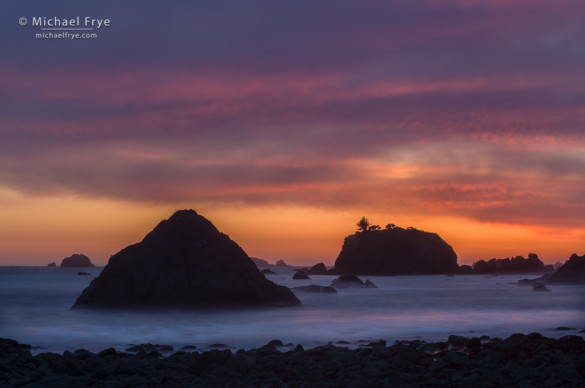
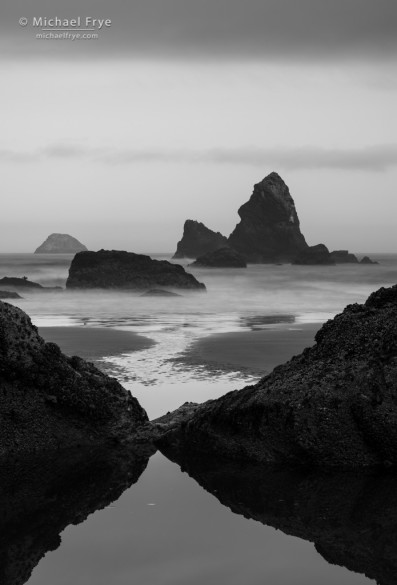
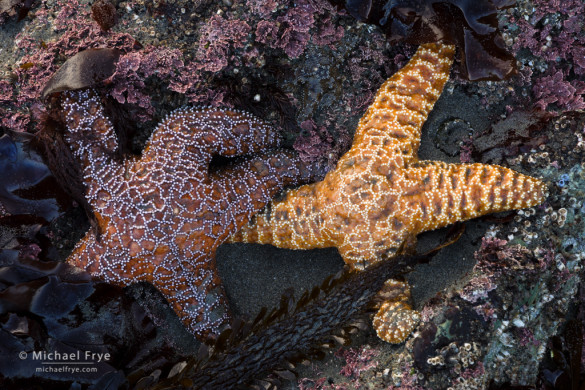








Michael those are all beautiful but I especially love the first one with the rhododendrons. You’ve photographed them before in the redwoods and they look fantastic every time.
Is fog a seasonal thing at the redwoods or pretty much all year? I’d love to drive up and try photographing the fog and trees there.
Thanks John. As is the case elsewhere along the California coast, fog is most common in summer.
Really enjoy your blog Michael, I just had my first foray into the redwoods (del norte) last month and it was wonderful. We had great morning conditions both days and I got some really outstanding pictures. I can’t wait to go back. I always look forward to your next blog and find myself searching through past ones just to learn more about the field. Thanks so much!
Thanks Mike, and I’m glad you had a good time up in the redwoods!